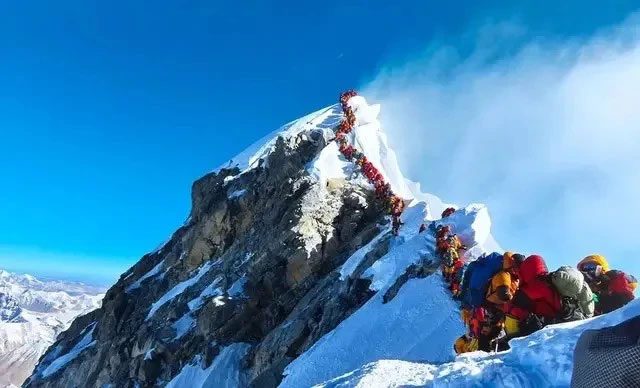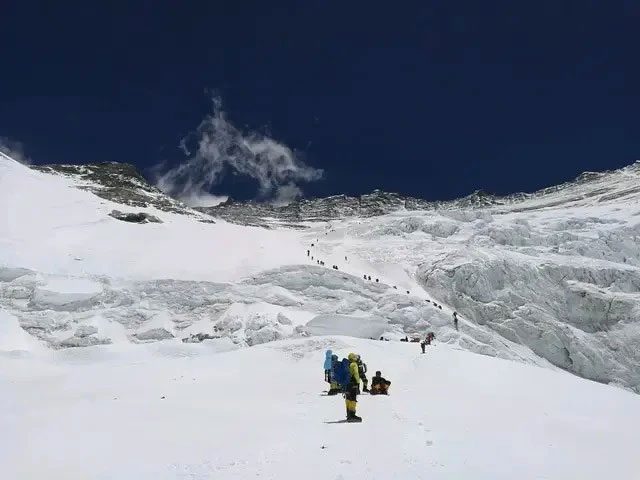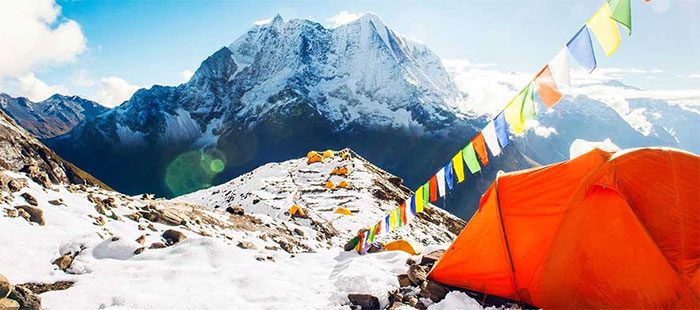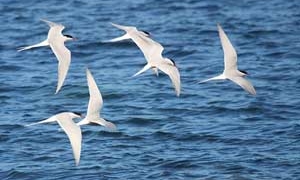You only have a chance to reach the summit of Everest if you set off at midnight. If you wait until dawn, you may never return.
Mount Everest, the highest peak in the world, is located at the border of China and Nepal, serving as the boundary between the two nations. The northern slope of Mount Everest is situated in Tingri County, Tibet, China, while the southern slope is in the Khumbu region of Nepal. On December 8, 2020, the highest point of Mount Everest was officially measured to be 8,848.46 meters above sea level.
However, not everyone who wishes to conquer Mount Everest gets the chance to stand on its summit. According to statistics, since the first successful ascent in 1953, a total of 7,000 people from around the world have reached the summit of Everest. Every year, numerous mountaineering enthusiasts from all corners of the globe come to Everest, and many of them have had to turn back or remain on the mountain forever.

Climbing Mount Everest during the day is not impossible, but if you understand the hidden dangers, you will surely realize why you must embark on your Everest journey at midnight!
Why Climb Mount Everest at Midnight?
On May 27, 2020, China dispatched professional surveyors to manually measure the height of Mount Everest. At noon on May 27, the team successfully reached the summit and began their work. In an interview, the host asked the team leader why they scheduled the ascent of Everest to begin at midnight—was there any specific guidance or explanation?
The team leader revealed the reasons for choosing to climb Mount Everest at midnight, which are as follows:
Climbing Mount Everest is an incredibly challenging and dangerous task, and safety is the top priority when standing on the highest mountain in the world. Therefore, the choice to set off at midnight is solely to ensure safety.

During the day, as the sun begins to rise and sunlight hits the snow-covered rock walls and glaciers, the risk of falling rocks that climbers face increases because the occurrence of falling rocks is closely related to rising temperatures.
Experts state that when departing at midnight, the moon and stars provide minimal light, and the winds on Everest are not strong before dawn, making this an ideal time for climbing. It typically takes about eight hours for climbers to ascend from an altitude of 8,300 meters to the summit.
If climbing during the day, temperatures will be higher; however, the sunlight increases the risk of climbing. Once the sun rises, the snow will soften under the sunlight, potentially causing avalanches. If you encounter an avalanche on the mountain, your chances of survival are extremely slim, and such avalanches occur frequently.

The structure of Mount Everest consists of rock and sediment. Inside the rock, there are cracks caused by thermal expansion and contraction. Water seeps into these cracks and freezes at night. When the sun shines during the day, the warmth melts the ice into water, and loose rocks can collapse at any moment.
The second issue is the equipment used by climbers. Mount Everest climbers wear shoes that weigh 4 kg, and if too much snow sticks to their shoes during the ascent, the weight can increase significantly. It is important to note that at the summit of Everest, at altitudes above 8,000 meters, the air is very thin, making breathing difficult, thus every step forward becomes challenging, and any additional weight increases the risk of failure during the climb.
According to experienced climbers, only from midnight until early morning does the snow become hard and not stick to shoes, which is the result of the experience of countless mountaineers.
If you climb Everest from the northern slope in China, the nearest campsite is at an altitude of 8,300 meters above sea level. If everything goes smoothly, it will take about eight hours to reach the summit from there, meaning if you start at midnight, you could successfully reach the summit around 8-9 AM, just as the sun rises.
There are strict regulations for climbing and descending Mount Everest. The summit also has a closure period. The so-called closure period is often understood as a prohibition on climbing. You need to reach the summit within a certain timeframe. If you exceed this time, no matter how steep or high you climb, you must turn back and descend unconditionally. Exceeding the closure time can lead to severe weather and environmental conditions on the mountain, making descent even more dangerous.

The best time of year to climb Mount Everest is from April to May, which is also the climbing season for Everest. The most suitable period is essentially only ten days in May. Mountaineering enthusiasts from all over the world typically arrive at Everest Base Camp in April, waiting for the right moment to start the challenge of conquering Mount Everest.
The strongest sunlight occurs at noon, and there are strong winds of level 8-9 on Mount Everest year-round. Under such climatic conditions, it is very difficult for humans to maintain their footing. In the event of an emergency, descending too late becomes extremely dangerous. We all know that descending is harder than ascending. If precautions are not taken, one could lose their life on Mount Everest.
From October to March each year is the windy season in the Everest region, with complicated and volatile weather. The strong northwestern winds can drop temperatures to -60 degrees Celsius, and wind speeds can reach 90 meters per second. From June to September each year is the rainy season, where southeasterly winds cause frequent snowfall, making it unsuitable for climbing.
Spring, from March to May each year, is when the windy season transitions to the rainy season. During this time, the weather is relatively stable but only lasts for a few dozens of days to a few months, making it a relatively stable climate. Therefore, most climbers from around the world choose this time to ascend Mount Everest!




















































